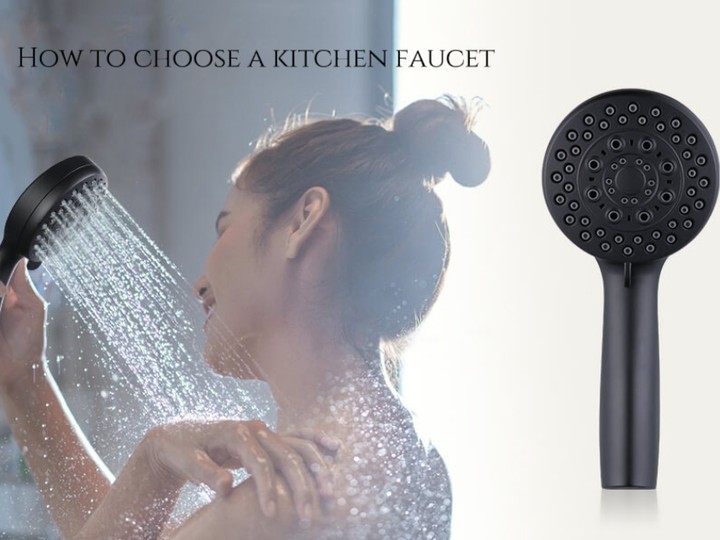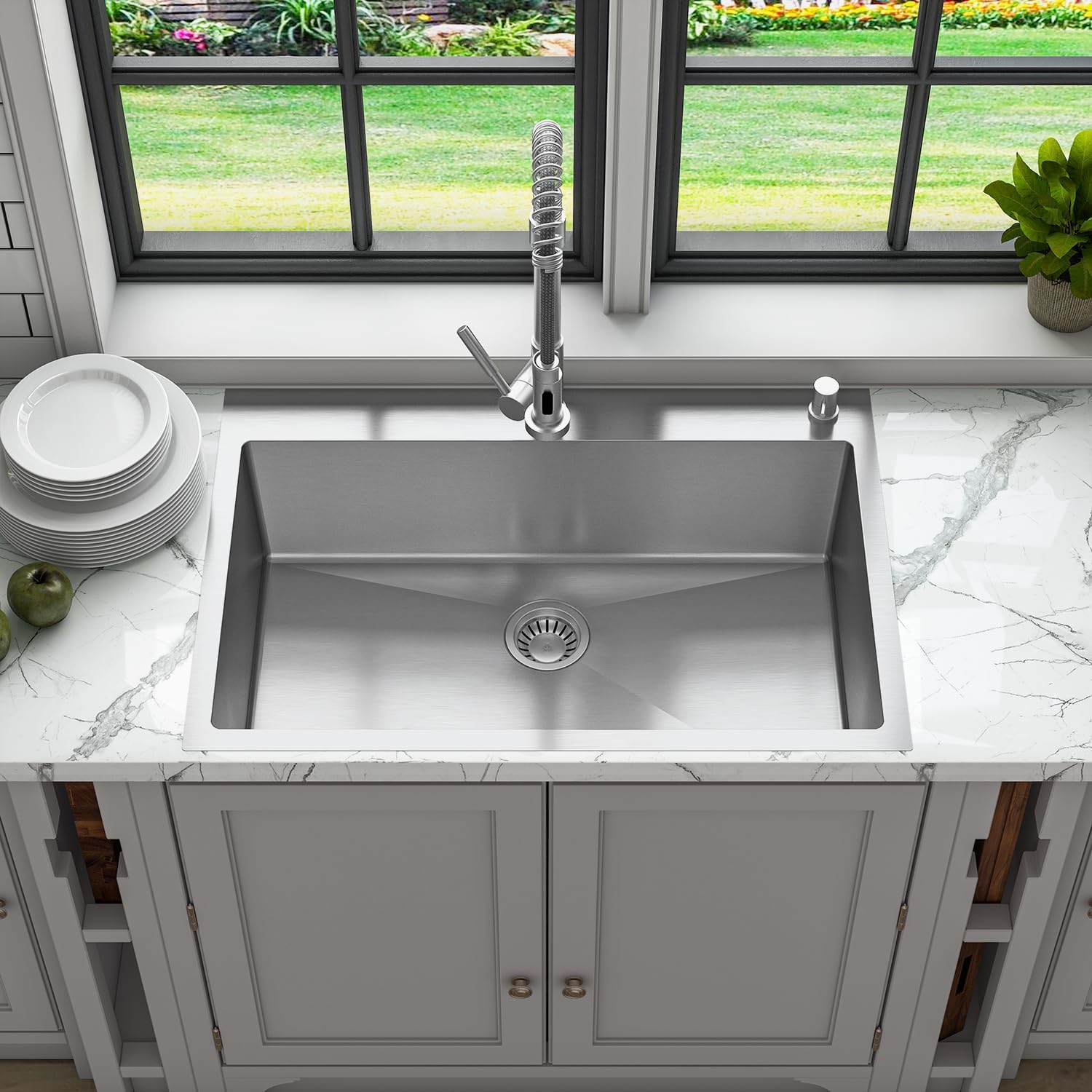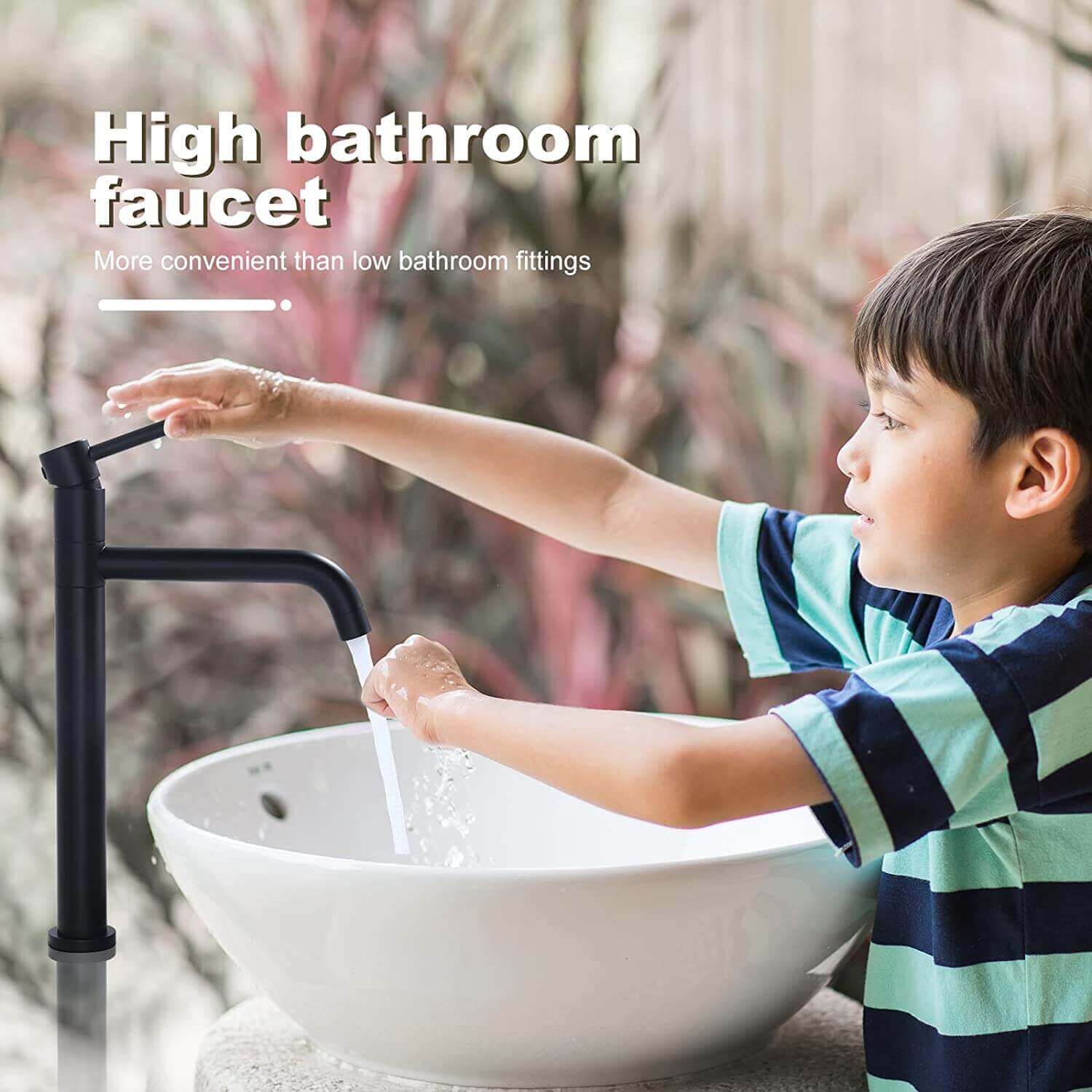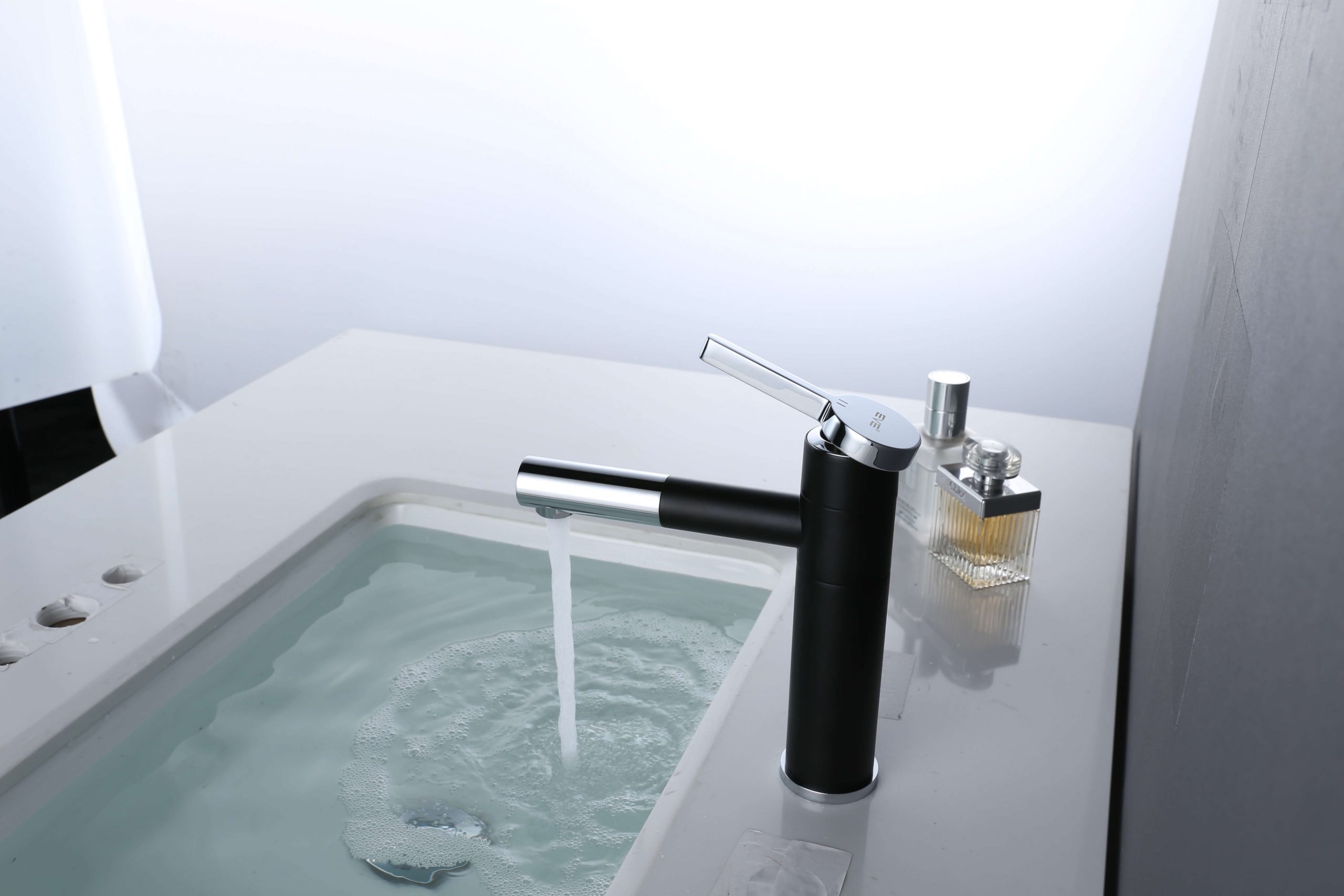Many people have no idea about how to choose a kitchen faucet.The kitchen is one of the most used rooms in the house as a place to store and prepare food. With this high level of use, it shouldn’t be a surprise that the kitchen faucet can wear out over the years and show signs it needs to be repaired or replaced. Common problems that can occur with a kitchen faucet include mineral deposit build-up, rust, and leaks.
You can replace certain parts of your faucet, such as the cartridge, aerator, or o-ring, to extend the life of this fixture, but replacing the entire faucet is recommended after repeated repairs. It’s also important to remember that you don’t need to wait for your current faucet to fail before replacing it. Sometimes you want to change the aesthetics of your kitchen, or you may see a new style of faucet that is more attractive than your standard faucet.
Regardless of the reason, it is important to research before purchasing a new faucet product and learn about their various features and factors that may influence your final decision. Keep reading to learn how to choose a kitchen faucet.
How to Replace Your Kitchen Faucet
When you notice signs of a leak, uninterrupted drip, or mineral buildup on the side of your kitchen faucet, investigating what’s causing the problem can help you make an informed decision about whether to repair or replace the faucet.
Leaks can usually be fixed by replacing the o-ring or cartridge in the faucet, so fixing the faucet may be less expensive than replacing it. However, if the faucet still continues to leak, replacing the fixture is a better option than continuing to spend money on replacement parts.
Similarly, hard water in your home is usually responsible for the buildup of minerals. While you can replace the faucet, it doesn’t solve the actual problem. In order to prevent minerals from building up on your new faucet, you’ll need to install a water softener before replacing the old one.
Considerations for Choosing a Kitchen Faucet
When cared for and properly maintained, kitchen faucets typically last 12 to 20 years. Therefore, for how to choose a kitchen faucet, it is necessary to take some time to understand the various product features as well as the factors that may influence your decision such as flow rate, sink configuration and finish.
Flow Rate (GPM)
When you are looking for a new kitchen faucet, one of the key factors to look into is the flow rate of the fixture. Flow rate is usually measured in gallons per minute (GPM), which refers to the amount of water that flows through a faucet in one minute. Older faucets had an average flow rate of about 2 grams or more, and despite water conservation efforts, most faucets now have a flow rate of 1.8 micrograms or less. It’s important to note that before going to your local home improvement store or buying a new faucet online, check your local building codes to see if there are any restrictions on the flow rate of your kitchen faucet. Some areas require the installation of a low-flow faucet with a maximum flow rate of 1.5 GPM. However, the disadvantage that exists with a low flow faucet is that it takes longer to fill a pot or bucket, on the other hand a low flow rate will help you save money on your water bill.
Sink Configuration
Where the faucet will be installed is almost as important as the actual faucet. If you are installing a new sink, then you can decide on the appropriate sink configuration while looking for a faucet, but if you have an existing sink, then you will need to find out what the sink configuration is before deciding on a new faucet.
Sinks may have one hole for both the hot and cold water line or they can have over four different holes for the cold water line, the hot water line, the faucet bracket, soap dispenser, or an independent hole for a pull-out sprayer. Inspect your sink to find out how many pre-drilled holes it has, so you can find a suitable faucet. Also, keep in mind that many faucets come with covers or faceplates that can be used to conceal additional pre-drilled holes in the sink, but if the sink doesn’t have enough holes, isn’t recommended to drill additional holes in the sink to accommodate a faucet.
Finishes
If you prefer a cohesive look in your kitchen, check out our selection of kitchen sink faucets in finishes that match common cabinet hardware. Chrome, nickel and bronze kitchen faucets are available at every price point.
You can also make a statement with a black kitchen faucet, add a touch of elegance with a gold kitchen faucet or create a traditional look with a brass kitchen faucet.
Faucet Types
Typically, kitchen sink faucets have either one handle that rotates directionally to change water temperature or two handles for mixing hot and cold water. These often include a sprayer that sits to the side.
There are a few types of faucets, and some have pull-out or pull down kitchen faucet with spray and stream options. Hands-free faucets add convenience to the kitchen and can be touch- or motion-activated. These faucets come with controls for the temperature and volume of water, making them a safe choice for homes with children. Hands-free faucets work well with the universal design concept, which aims to make living spaces more accessible and accommodating for every level of physical ability.
Other faucet types include:
- High Arc: a faucet that’s higher than a standard faucet, usually 8 to 10 inches or more from the base of the counter to its highest point
- Low Arc: a faucet that’s low and sits close to the sink
- Pot Filler: a faucet that’s wall-mounted over the stove or cooktop, making it convenient to fill pots with water without transporting them from the sink to the stove
- Bridge: a faucet with a horizontal bar that connects the hot- and cold-water handles
- Swivel: a faucet that swivels 180 to 360 degrees, making it convenient for cleaning the entire sink
Cost
The cost to install a new kitchen faucet can vary greatly depending on whether you decide to install the faucet yourself or have a professional plumber complete the job. If you have the skills and all the tools required to install the kitchen faucet, then you will only need to worry about paying for the new faucet, which can cost about $50 to $2,000. However, if you don’t have the tools for the job, you will need to purchase them before you can begin. This includes an adjustable wrench ($10-$40), channel locks ($10-$30), basin wrench ($15–$20), tape measure ($5–$20), plumber’s putty or tape ($5–$10), and flexible supply lines ($3-$10).
With this in mind, if you can’t handle the installation on your own and want to try and cut installation costs, it’s recommended to opt for a simple stationary straight spout faucet with a chrome or stainless steel finish.
Where to Shop
The first place that typically comes to mind when you need a new kitchen faucet is the local home improvement store, but you can find a wider selection of products online from reputable dealers, so you aren’t limited to the products in your area. Consider the benefits and drawbacks of buying a kitchen faucet in-store or online to figure out which method best suits your needs.
Buying In-Store
One of the best reasons to buy a kitchen faucet in-store is that you can usually find an experienced professional to help you choose the right fixture for your home. You also get to see the product with your own eyes instead of being limited to pictures or videos online. Just make sure that you have all the necessary information on hand before you head to the store, or you may be making multiple trips to pick up your kitchen faucet.
Buying Online
When you choose to buy kitchen faucets online, you can find a wide variety of types, styles, and finish options that can help customize the look and feel of your kitchen. Online stores will also offer more information about their products, and you can view any information you need at any time without having to leave your home. However, when you shop online, you can only look at pictures and videos. Additionally, you may experience shipping issues, such as a faucet that gets lost in the mail.
Where to Buy a Kitchen Faucet
Some people don’t like the idea of using their financial information online or relying on a shipping company to safely deliver their products, while a certain other person may not like the idea of talking to a store employee or trying to find a new kitchen faucet in a store. Overall, there is no significant difference between buying a kitchen faucet online or in-store, so whether you decide to buy from a local home improvement store or from a reputable online store depends on personal preference.
Faucet Installation and Operation
There are two types of faucet installations: top mount and bottom mount. Top-mount faucets attach with screws through the bottom of the faucet piece from underneath the counter. Bottom-mount faucets attach with screws through the top of the faucet piece. There are four types of faucet mechanisms: ball valve, ceramic disc, compression valve and cartridge. The type won’t affect your day-to-day use but will affect faucet repairs and maintenance down the road.







